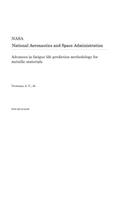
Advances in Fatigue Life Prediction Methodology for Metallic Materials
Series:
The capabilities of a plasticity-induced crack-closure model to predict small- and large-crack growth rates, and in some cases total fatigue life, for four aluminum alloys and three titanium alloys under constant-amplitude, variable-amplitude, and spectrum loading are described. Equations to calculate a cyclic-plastic-zone corrected effective stress-intensity factor range from a cyclic J-integral
NaN
VOLUME
English
Paperback

The capabilities of a plasticity-induced crack-closure model to predict small- and large-crack growth rates, and in some cases total fatigue life, for four aluminum alloys and three titanium alloys under constant-amplitude, variable-amplitude, and spectrum loading are described. Equations to calculate a cyclic-plastic-zone corrected effective stress-intensity factor range from a cyclic J-integral and crack-closure analysis of large cracks were reviewed. The effective stress-intensity factor range against crack growth rate relations were used in the closure model to predict small- and large-crack growth under variable-amplitude and spectrum loading. Using the closure model and microstructural features, a total fatigue life prediction method is demonstrated for three aluminum alloys under various load histories. Newman, J. C., Jr. Langley Research Center RTOP 505-63-50-04...
Price Comparison [India]
In This Series
Bestseller Manga
Trending NEWS




















